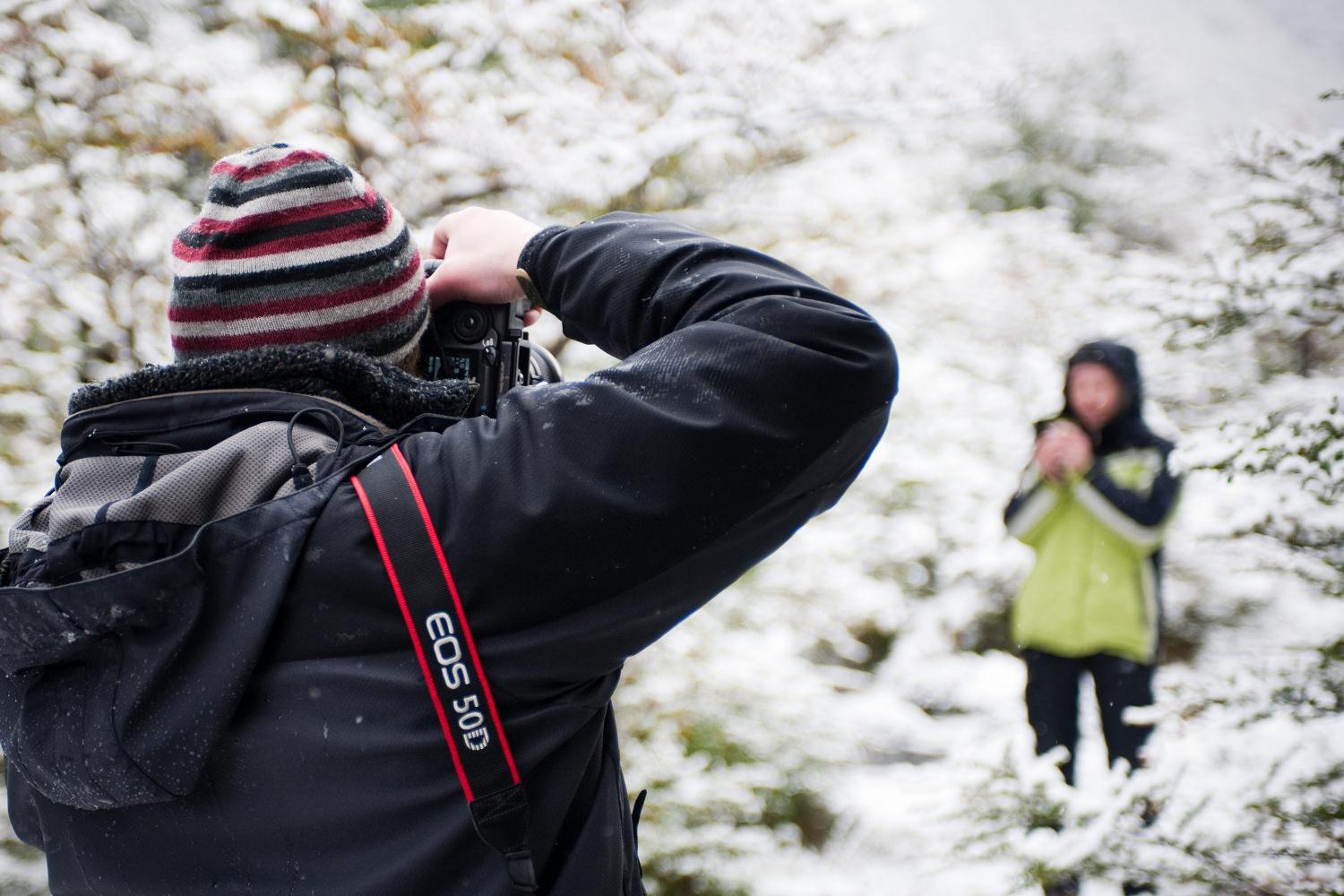I love the winter, and it's one of my favourite times to capture stunning photos. There are opportunities for great images everywhere, from snowy landscapes to winter sports, and from frozen nature scenes to icy, wind-swept city streets.
Unfortunately, my cameras aren't quite as enthusiastic about the winter as I am. They're designed to work at moderate temperatures, and although they will continue to function in the cold weather, they do become more susceptible to damage as the temperature drops.
Thankfully there are a few simple things you can do to protect your digital camera from the cold weather. They will help keep it operating for as long as possible in the chilly temperatures, and reduce the chances of causing any permanent damage to your equipment.
Take Spare Batteries
Of all the parts of your camera, the battery is by far the one which is most affected by changes in temperature. A drop of 10 °C (18 °F) can cause your battery life to deplete by as much as half, meaning that in very cold climates you'll soon find yourself running out of power.
Take at least one spare battery pack so the cold doesn't bring your photoshoot to an early end.
To help prolong your battery's life, turn off all unneccessary features of your camera. This includes the LCD screen, flash, image stabilisation, and even the auto focus if possible. You should also turn your camera off completely whenever you're taking a break between shots.
No matter how careful you are with your battery, there's still a good chance it'll run out, so take at least one spare. Carry it in an inside pocket to keep it warm; this will help maximise its life once you start using it. When you swap batteries, put the depleted one in the same pocket and warm it up again - after a while you'll find that it's regained some of its life and is ready to be used again.
Protect Your Camera from Condensation
Although flat batteries are an annoyance, they won't do any permanant damage to your camera. The same is not true of condensation - moisture inside your camera can damage electrical components and leave watery marks on the inside of lenses, making it the number one thing to avoid when heading out for some cold weather photography.
Moisture is the surest way to damage your camera equipment. Image by dlr_.
Condensation is caused when you move from cold air to warm air or vice versa. When shooting outdoors in the winter, this typically happens when leaving your house, and when returning later, so you have to be particularly careful with your camera at both of these times.
The first thing to do is to ensure that any temperature changes happen as gradually as possible. A good way to do this is by leaving your camera in an intermediate environment such as a porch, garage, or car. Doing this for at least an hour in between environments will give your camera time to adjust to the conditions more gradually, reducing the chances of condensation forming. While doing this, remove your battery and keep it warm to extend its life when you start shooting.
You may still get some condensation no matter how slowly the temperature changes. Luckily photographers have a tried-and-tested trick for dealing with this moisture - put your camera in an air-tight bag such as a Ziploc, and add a sachet of silica gel. These sachets come in the boxes of most electronic goods and will soak up any condensation, keeping your camera safe and dry.
Provide Some Padding
In cold weather, plastic and glass become more brittle, meaning that they break more easily. Seeing as cameras are made almost entirely out of these materials it's not hard to see why that could be bad news!
A padded camera bag will protect your equipment if you drop it, and also help keep it dry.
To protect your camera from being dropped, keep it in a padded bag or case as much as possible, and only remove it when you're standing still, on firm ground, ready to shoot. When you do remove your camera, be sure to use the neck or wrist strap, as it can easily slip out of your hands, particularly if they're cold and wet or if you're wearing gloves.
Some people recommend keeping your camera round your neck at all times, and putting it inside your coat when not shooting. However, because the air next to your body is warm and the camera is cold, this can cause problems with condensation, so is not a good idea.
Keep Yourself Warm
With all this talk of protecting your camera from the cold weather, it's easy to forget that it affects you too. In fact, you're much more likely to give up before your camera does, so it's important to go out properly prepared.
Protecting yourself from the cold is as important as taking care of your camera. Image by Trey Ratcliff.
Wear plenty of layers to keep you warm, and include waterproofs if the ground is wet or snowy, as you may find yourself having to crouch or kneel down to get the shot you want. A hat and gloves are a good idea, although thick gloves can make it hard to operate your camera's buttons so either wear fingerless gloves or mitten-style ones with a finger section that folds back.
Finally, a flask of hot drink and a few high-energy snacks are ideal for maintaining body temperature and keeping your energy levels up.
Winter photography can be a lot of fun, but it can take its toll on your equipment, as well as your body. By following these simple tips you can protect your camera from the cold weather, and prolong its life so that you can get all the pictures you want and make the most of your time outdoors.
